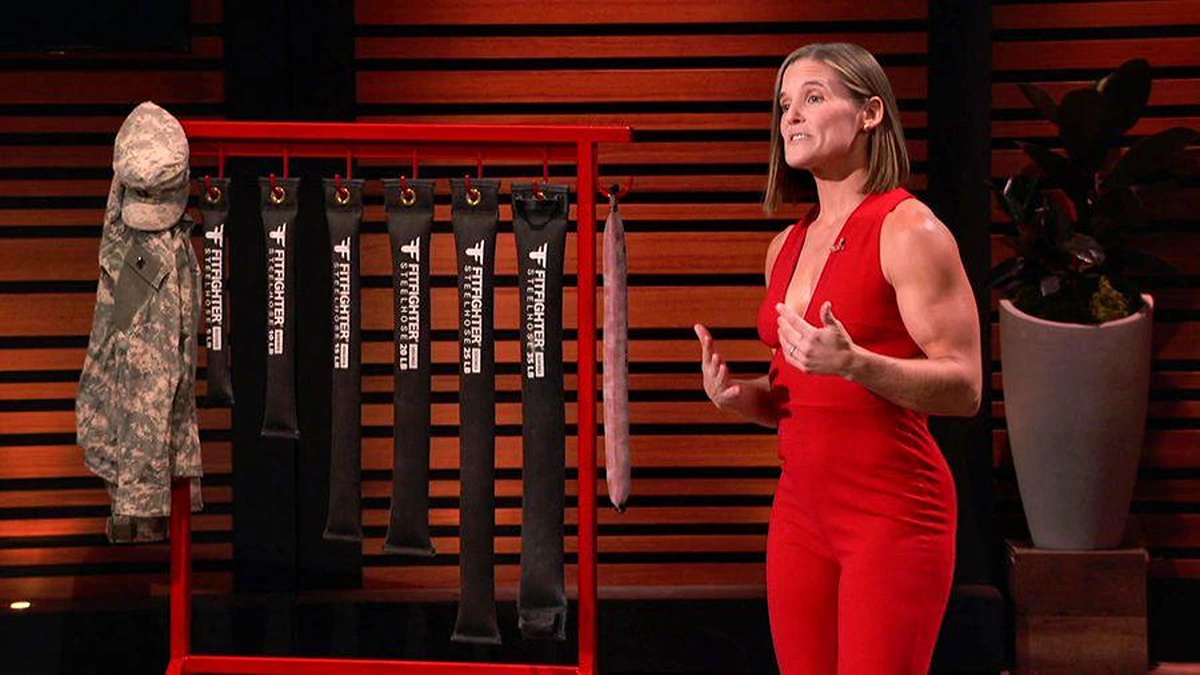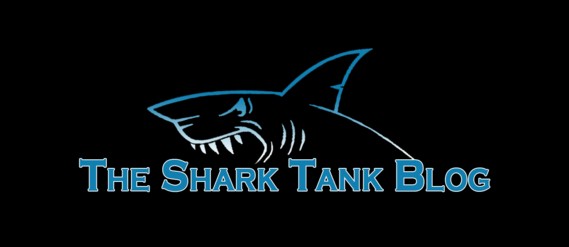
When entrepreneur Sarah Apgar walked onto the stage of Shark Tank, the prospective investors sat up quickly. Why? Because the product she brought was unlike anything they’d seen: a fitness tool built from actual firefighters’ equipment.
Naturally, the panel of Sharks was intrigued—and in some cases, genuinely shocked—when they discovered what the product was made from. What seemed to be a novel workout weight turned out to be recycled fire-hose material filled with steel shot.
Let’s dive into the full story: the idea, the pitch, the reaction, and what became of FitFighter.
From Firehouse to Fitness: The Origin of FitFighter
A lot of startup stories begin with a lightbulb moment in a garage. FitFighter’s origin is no different—except that the setting was a firehouse, and the lightbulb moment involved combatting the very tools of the job.
Sarah Apgar was formerly in the Army Corps of Engineers, and a volunteer firefighter noticed something important. The way firefighters physically trained in the gym did not translate to the demands of actual fireground work. She recognized a gap between “workout” and “job reality.”
As she explained later: “Originally, the first steel hose ever was a piece of a real fire hose, filled with all kinds of different materials. The goal was to literally mimic a charged fire hose.”
Moreover, the product evolved into what is now called the Steel Hose by FitFighter, a training weight system made from real hose material. Thus, it was filled with recycled steel shot, designed to mimic the handling of live hose lines.
One local news source described it this way: “She used real firehose material and filled it with recycled steel shot. The longer the hose, the heavier it is. They range in weight from 5 pounds to 50 pounds.”
So when Shark Tank investors asked, “What is that made from?” The answer was indeed unexpected. It wasn’t simply rubber or plastic or foam: it was industrial-grade hose, repurposed for fitness.
FitFighter Shark Tank Pitch
In the Shark Tank Season 12, Episode 5 (November 13, 2020), Sarah pitched FitFighter, asking $250,000 in exchange for 15% of her company. She asked Sharks to pick up the hose-weights and try them.
The novelty factor was high. One moment, the Sharks were in a studio expecting spreadsheets and growth projections. While on the next, they were holding what looked like a fire hose and being told to start moving with it. That alone created a memorable moment.
Of the five Sharks, many backed out, citing a lack of focus or too many moving parts in her business model. But one investor, guest Shark Daniel Lubetzky, made an offer: $250,000 for 25% equity. Sarah accepted.
Why was he willing? Because the product hit multiple high notes: veteran-founded, public-service origin, fitness innovation, and potential scalability. Thus, it had authenticity—and that authenticity resonated.
What the Investors Couldn’t Believe: The Materials
The core “shock value” of the pitch came from what the product was made of—and what it represented. Here are the key aspects:
- Real fire hose material: The outer casing of the weights is actual fire-hose rubber/nylon, giving the tool authenticity and durability.
- Filled with recycled steel shot: This isn’t sand or a traditional gym fill; it’s finely-sized steel pellets. It’s a material chosen for its density, flow and durability. Apgar described steel shot as “five times denser than water, flows like water, and twice as dense as sand.”
- Designed for functional movement: The tool’s design wasn’t just for curls and bench presses; it was for the specific movement patterns of firefighters. Also for dragging hoses, extending, bending, and stabilizing—so the fitness tool translates real-world work into training.
For Sharks used to seeing “new fitness gadgets,” this was a radical departure. They weren’t just buying a colorful dumbbell; they were buying a piece of gear born out of tactical service with crossover consumer appeal. That origin alone made many of the investors sit up and say, “Wait—what did you say this was made from?”
Why It Stood Out
Several factors made FitFighter more than just a quirky product. In fact, they’re the very reasons it resonated:
- Authentic origin story: As a volunteer firefighter and Army veteran, Sarah brought credibility. The product was born as a solution for first-responders before being adapted for broader use.
- High-quality materials with story: Most home-fitness tools are plastic, foam, or generic metal. FitFighter’s use of reclaimed hose and steel shot adds durability and story value.
- Dual market potential: Initially aimed at fire departments and first-responders, but later pivoted to consumer fitness. The broad market helps scalability.
- Social impact component: Part of the sales go toward first-responders and veterans via a foundation partnership. Thus, this adds brand value beyond just fitness.
- Demonstrable results: The product isn’t only a novelty. It was used by fire academies, etc, showing their application in high-performance training.
Because of all this, FitFighter wasn’t just another “gadget.” It was a story, a mission, and a clever repurposing of industrial equipment.
What Happened After The Shark Tank Deal
Landing a deal is just the beginning; what matters is what happens after that.
- Immediately after airing, the company saw a surge. According to reports, the business did $250,000 in sales just in the week after the episode.
- Also, they secured major retail distribution. A partnership with Dick’s Sporting Goods followed, helping reach the mainstream consumer market.
- However, the business later raised seed funding and underwent a slight rebrand under the broader company name “SloMo” (School of Loaded Movement).
- Sarah has continued to speak publicly about sustainable strength training, the tactical origins of the product, and how she wants to democratize weight training for “ages 8 to 80.”
Lessons from the FitFighter Story
For entrepreneurs, fitness buffs, and dreamers alike, there are several takeaways:
- Solve a real problem you’ve lived: Sarah identified a genuine gap (firefighter training vs gym training), and that made the solution credible.
- Materials and story can differentiate: “What it’s made from” became a headline. However, the uniqueness of materials adds to the brand narrative.
- Live demo matters: On Shark Tank, she didn’t just talk about it; she made the Sharks pick up the hose-weight and try it. Engaging physically creates impact.
- Be ready to pivot: Originally tactical only; later expanded to consumer. When COVID-19 hit, she pivoted to training online.
- Partners make a difference: Retail distribution, manufacturing partnerships, and the Shark deal all accelerated growth.
- Values attract consumers: A service-origin story, veteran founder, support for first-responders—these are values that resonate beyond the fitness market.
Why the Sharks “Couldn’t Believe” It
When you hear “weights,” your mind goes to dumbbells, kettlebells, maybe sandbags. Rarely do you think “old fire hose filled with steel shot.” The moment of surprise is built into the product—from the repurposed hose to the dense steel fill to the tactical story behind it.
From their vantage:
- A Shark sees pitched numbers and valuations regularly. But when something has a tactile novelty, “Hey, pick this up and feel it.” That triggers a different response.
- The Sharks likely expected conventional gym equipment. Instead, they got a tool born of firehouse demands, rugged, unconventional, and with a story.
- The “couldn’t believe” moment is part curiosity, part respect, part “We’ve seen many products, but not this.” And that reaction boosts memorability and word-of-mouth.
Conclusion
The FitFighter story is a potent blend of service, innovation, material creativity, and fitness insight. On the other hand, it shows that sometimes the most compelling product ideas aren’t made in a sterile lab. Instead, they are forged in real-world environments: in this case, firehouses and military training fields.




















